Text
Jawan Review

November 17, 2023
by Inakshi Chandra-Mohanty
In the 1970s, Amitabh Bachchan’s entry into Hindi cinema gave birth to the “Angry Young Man.” He was a hero, who fought against the system, who fought against injustice, and became a voice for the subdued people in society. It was one man against the world. Through the 80s, this phenomena continued, but as the new century neared, the romantic hero emerged and the action hero became an afterthought. People either no longer wished to change the system, or they no longer trusted a lone hero to do it. With the birth of a new generation, softer male leads became the norm with Shah Rukh Khan at the height of romantic stardom.
Though Hindi films let go of this concept, South Indian Cinema, continues to celebrate its heroes through films on injustice with a male lead as savior. So it is only natural that Atlee, a South Indian filmmaker, brings back to Hindi cinema the heroic mass entertainer, ironically starring the very actor who had originally taken away the limelight from the “angry young man” of the 70s and 80s. Jawan follows a man who strives for justice, who wishes to correct a system which favors those who are guilty over the many innocents, and for that, he resorts to vigilantism putting him in the crossfire of both the police and an evil arms dealer.
I did not have great expectations from Atlee. Though his films are entertaining, they have never risen to greatness, barring Raja Rani, which is the best of his work. However, he has great mass appeal and Jawan promises the same.The plot is intricately woven with an amalgamation of elements that tackle many relevant issues in society today. From farmer suicides to hospital inadequacies, by blending real stories into a fictional universe, writer-director Atlee appeals to the struggles of the common man and attempts to raise awareness regarding the flaws in the system that governs Indian society. Alongside important themes, the film’s strength lies in its strongly choreographed action sequences with women at the forefront. Shah Rukh Khan as the man of many names is the hero, but he is surrounded by powerful women fighting for themselves and for others. It is exciting, entertaining, and visually captivating with a thoroughly ‘massy’ feel.
However, my biggest issue with Jawan is the same problem I’ve had with Atlee films in the past, particularly Mersal and Bigil. They’re all over the place. The shift between present and past, the placement of flashbacks, too many characters, too many plot points, everything is a disjointed mess. There isn’t a singular arc keeping the story moving. In an attempt to create suspense, using non-linear storytelling, the makers sacrifice emotions. We begin to connect with a character, or get interested in a certain plot point, but a sudden shift in the story, leaves us hanging. By the time it returns, our emotions no longer remain the same.
Nevertheless, it is entertaining and much credit for that goes to the performances. Every single actor in the cast does a tremendous job: the army of six girls (Lehar Khan, Sanjeeta Bhattarchaya, Priyamani, Sanya Malhotra, Girja Oak, Aaliyah Qureishi), Deepika Padukone in a cameo appearance, Seeza Saroj Mehta as the little girl Suji, Sunil Grover, Ridhi Dogra, Eijaz Khan, and even all those in small bit roles. As for the central trio, anything I say in their praise would be less. Nayanthara is enigmatic and powerful as the law-abiding officer in search of who she believes to be a problematic vigilante. I am glad her stardom is finally extending beyond the borders of the south. Though Vijay Sethupathi has already made his mark on the Hindi audience through Farzi, it is through Jawan his versatility comes forth. I have seen so many actors struggle outside their comfort language, but he doesn’t let his difficulty with Hindi get in the way of his menacing performance. And last but not the least, is the star of the show, Shah Rukh Khan. Comedy, romance, drama, action, there is no genre in which he lacks and Jawan touches upon it all. Such a strong, versatile range of emotions is displayed through one character. This film is a reminder that Shah Rukh Khan’s stardom and aura are unmatched.
Jawan is not perfect, it is not without its flaws. But its entertaining nature, the larger-than-life characters, and Shah Rukh Khan’s explosive comeback make it a worthwhile watch.
#bollywoodreviews#jawan#atlee#shah rukh khan#nayanthara#vijay sethupathi#netflix india#hindi cinema#indian cinema
9 notes
·
View notes
Text
Kohrra Review
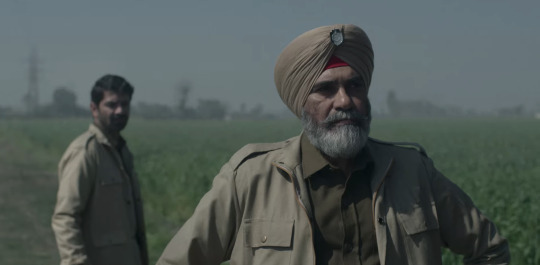
July 22, 2023
by Inakshi Chandra-Mohanty
Seven years back, we got a glimpse of the downtrodden state of Punjab through the film, Udta Punjab. The drugs, the violence, the chaos. It was a stark departure from the gorgeous pinds, ganne ke khet, and an overall romanticized version of Punjab we had grown accustomed to through the movies. We still see those sprawling fields in Kohrra, but now there is an ominous air over it, a fog of criminality that refuses to disappear. Netflix’s latest series is a crime thriller that follows two police officers, Balbir Singh (Suvinder Vicky) and Amarpal Garundi (Barun Sobti), as they attempt to solve the murder of a groom, just days prior to his wedding. Their personal and professional lives intertwine as the search for the culprit reveals much about the dismal state of society.
It is no surprise that one of the writers of Udta Punjab is a co-creator on this series. Sudip Sharma, also known for Amazon’s critically acclaimed show, Paatal Lok, has the knowledge and writing prowess to explore the gritty depths of Punjab. Along with director Randeep Jha, and co-writers, Gunjit Chopra and Diggi Sisodia, they create a universe that relies heavily on its atmosphere. From the Punjabi dialect spoken by the actors to the stark cinematography, they strive for authenticity.
Though it gets straight into the main plot, the crime being discovered within the first few minutes of the first episode, the story is slow to unravel. The exposition of the characters happens over the course of the series as each episode reveals a little more about their personal lives. The narrative is predictable. But, there is an unpredictability within that predictability. Many aspects of the mystery are easily guessed early on, but they are just loose threads. How these threads are woven together to form this murderous situation is the suspense we relish.
But what sets Kohrra apart, is the way it uses the mystery as background fodder for a poignant story of parental abuse and generational trauma. We see a whole generation of youngsters stifled due to the misplaced frustration of their elders. Happy suffers the inattention of his father, leading him down a treacherous path. Garundi is victim to the emotional blackmail of his brother and sister in law. Nimrat faces mental torture at the hands of her rigid father. Paul feels suppressed by the extreme beliefs of his father and as a result, Liam struggles due to Paul’s pain. The common thread here is the existence of parental figures who are insistent on imposing their beliefs from a generation of the past on their children of today. It is a bleak commentary on familial structures in modern society amid the chaotic crime scene in Punjab.
The brilliant writing along with the great performances bring these characters and themes to life. Suvinder Vicky and Barun Sobti do a commendable job leading the show. It’s remarkable to see how Barun Sobti imbibes this rustic Punjabi character, so different from any role he has portrayed thus far. This may be his fourth release of the year, but it’s definitely his best performance of them all. Suvinder Vicky is a revelation. Despite a career lasting almost two decades, with a few forays into Hindi entertainment, he is largely unknown to an Indian audience outside Punjab. This series has not only brought to light his nuanced acting, but has also catapulted him into belated stardom. While these two actors lead the way, it is the supporting cast that keeps the series afloat. Harleen Sethi is terrific in the role of Balbir’s disgruntled, angry and depressed daughter, Nimrat. Rachel Shelly beautifully portrays Clara’s agony of losing a son in a nation foreign to her. And there are many more actors that do a tremendous job bringing emotion and authenticity to their roles.
As the series comes to a close, I find myself wondering, are we supposed to like these characters? Barring Nimrat and Clara, my heart doesn’t ache for anyone. Instead, I feel disgusted by some of these people and their despicable actions. But, I believe that is the intention. These grey characters are not meant to be likeable. They are instead meant to be seen as an imperfect part of an imperfect society. A society that is slowly drowning in its own evils. But, as they each have their own form of redemption, we experience satisfaction, that in this burning society, there is a glimmer of hope. Just like its characters, Kohrra isn’t perfect. It is slow, it is predictable. But as the mystery takes a backseat, an important commentary on society emerges that makes the series a riveting watch.
#bollywoodreviews#kohrra#sudip sharma#randeep jha#suvinder vicky#barun sobti#harleen sethi#rachel shelly#netflix india#hindi cinema#web series#indian cinema
8 notes
·
View notes
Text
Lust Stories 2: All Films Ranked
July 9, 2023
by Inakshi Chandra-Mohanty
1. The Mirror
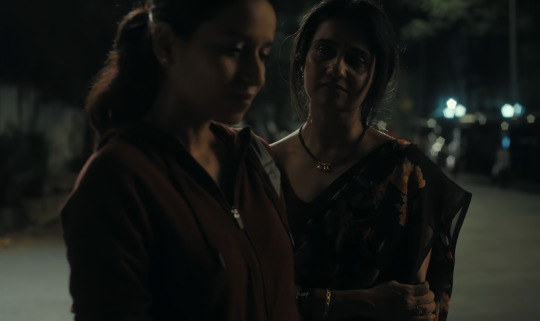
The film begins with a wide shot of a city. Towering apartments, surrounded by sprawling slums. Progress, countered by underdevelopment. This starting frame is just one example of the brilliant visual imagery that director Konkona Sen Sharma uses to set the stage for the complex relationship that develops between a woman and her maid. The Mirror is about a woman who walks in on her maid having sex in her bedroom. Lust and desire take over as she finds herself turned on by this spectacle prompting her to establish a pattern of secretly watching her maid’s sexual endeavors. This film is about much more than just lust. It is about two women who discover a new side to their sexuality that transcends class and caste. It is as much about the difference between them as it is about the common ground they find through this surreptitious activity. The themes are relevant. The writing, direction, and cinematography, are immaculate. And combined with the amazing performances by Amruta Subhash and Tillotama Shome, this short film becomes the best part of the anthology.
2. Tilchatta
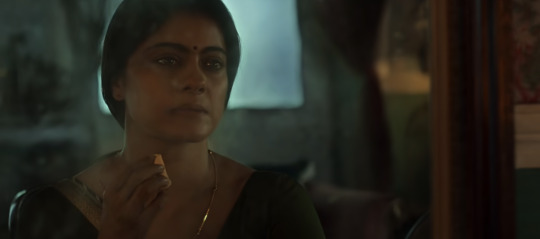
A woman in an abusive marriage aspires for a better future for her son as she struggles to escape her terrible fate. Directed by Amit Sharma of Badhaai Ho fame, this film is a tragic tale of manipulation, violence, and revenge, with lust at the center of it all. The best aspect of this film is the ominous atmosphere. The spacious haveli, its unspoken secrets, the many characters, and their dubious intentions. But in the process of building atmosphere, at times the plot suffers. The initial idea and the buildup are executed well, but the relevance of the conclusion is unclear. It is a depressing end to an already depressing story and serves little purpose beyond shock. However, despite the twisted ending, Tilchatta is impactful and serves as a great closure to the anthology.
3. Sex with the Ex
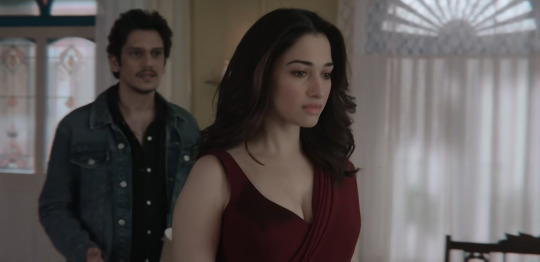
It is no surprise that this segment is directed by Sujoy Ghosh. Known for films like Kahaani, Badla, and Ahalya, Ghosh’s filmography is mainly comprised of films of a similar suspenseful genre. However, this horror thriller disguised as a lust story is the biggest misfit in this anthology. The story follows a man who encounters his ex after being stranded in a village due to a car accident. While lust is clearly a pertinent part of the film leading to a shocking climax, it is unfortunately hidden by other aspects of the film. The story is too absorbed in its mystery and suspense that lust barely makes an impact. It also does not help that the artificial background visuals, while purposeful, are extremely jarring. But despite the flaws and predictability, the plot development is intriguing. While not a perfect film, it kept my interest alive and is definitely worth a one time watch.
4. Made for Each Other
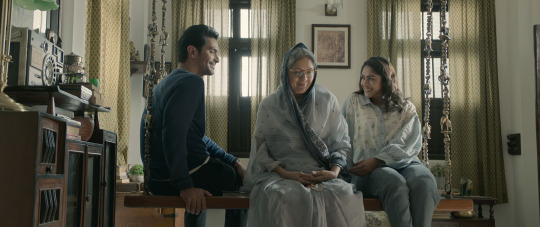
The weakest film of the lot is R Balki’s Made for Each Other which ironically starts the 2 hour long journey. What should have been an explosive beginning is instead a futile, ill-executed drama about a to-be married couple and their forays with ‘sex’ prior to their wedding. The concept itself, with its emphasis on the importance of sex in marriage, is interesting. However, there is no development of the plot, no arc to the characters, and an overall absence of conflict in the story. It remains bland and stagnant throughout. On top of that, the idea of an extremely progressive “Dadi” and her comical conversations with her granddaughter on sex, seems contrived and unrealistic. The advice that this short brings forth is useful, but unfortunately not impactful due to the lack of depth and conflict. It’s thirty minutes of time passing, nothing happening. And at the end of it all, I found myself asking, what was the point?
As with any anthology film, Lust Stories 2 has its ups and downs. Some parts are so well-made I desire to revisit them and others so insignificant they are best forgotten. But it maintains a balance, and ultimately is a worthwhile watch.
#lists#lust stories 2#the mirror#tilchatta#sex with the ex#made for each other#Konkona Sen Sharma#amit sharma#sujoy ghosh#R Balki
5 notes
·
View notes
Text
Jubilee Review

April 18, 2023
by Inakshi Chandra-Mohanty
“Yeh camera bade kamaal ki cheez hoti hai, Jai Babu. Usme se tu duniya ko voh dikha sakta hai jo tu dekhta hai, jise tu dikhana chahta hai.”
Cinema is a powerful medium. Consisting of many scattered images shaped into life by the vision of a director, films have the ability to leave a lasting impact on an audience. It is an opportunity for a director to show the world what their eyes see, tell a story they want to tell, even if possibly deceiving.
Jubilee explores the power of perception in this world of cinema. Set in the 1940s-50s, as the Indian independence struggle changes the lives of many, this web series follows multiple characters entrenched in the politics of the evolving film industry. There is Binod (Aparshakti Khurrana) with his ambitious, yet crooked journey towards becoming a star, Roy (Prosenjit Chatterjee) who is more concerned about the success of his production company than the dalliances of his wife, Jay (Sidhant Gupta) with his cinematic dreams and struggles to escape the refugee life, Niloufer (Wamiqa Gabbi), a former courtesan with acting aspirations, and Sumitra (Aditi Rao Hydari) on a path towards justice after she loses the love of her life and her only escape from this industry.
All of them struggle with this battle of images and perspective. Maintaining the image of the name they carry and the legacy they hope to leave versus the reality they live. And nothing is more indicative of that than their respective memories of Jamshed Khan (Nandish Sandhu). For some a talented actor, for others a star who could not be, a lover for some, an obstacle for others. Jamshed’s death in the first episode haunts each character in different ways and sets the stage for their journeys filled with greed, passion, ambition, and power.
This universe created by Vikramaditya Motwane is an ode to classic Indian cinema. From moments that pay homage to memorable scenes, to the episode titles which are names of old Indian films, the series is a delight for cinephiles. The beautiful visuals supported by an intriguing story and terrific acting only add to this cinematic delight. Sidhant Gupta is the breakout star of this series. While everyone has done a commendable job, he enamors as Jay Khanna, to the extent that I desired to see more of him even when he was not on screen. It isn’t easy to hold one’s ground and create a strong impact in the presence of such experienced and talented actors, but Sidhant Gupta manages to do that.
There are times when the show falters. The biggest weakness in an otherwise beautiful creation is the convoluted writing. At times it isn’t clear where the story is headed, and the time jumps are confusing. Where the show should have picked up pace in part 2, it instead stoops into self-misery. My interest in the characters wane as their actions no longer match the arc I had expected. Maybe it is the optimist in me that hopes for something positive. Or at least something bittersweet to make up for the tragic journey. But, ultimately it leads to an unsatisfactory ending.
However, the immersive storytelling distracts us from its flaws. We are so drawn into this world, into these performances, into the dramatic visuals and fantastic musical score, that a few faults in the narrative are no grave issue.
“Jo chup rehta hai lamba chalta hai.”
While dreams, power, ambition, and freedom are the core themes of Jubilee, it is perspective that shapes it. Through these characters’ perceptions of one another, we also see Vikramaditya Motwane’s perspective towards the world of cinema. It is clear that this work of art comes from a passionate love for cinema. But is it also a mirror to the film industry today? Is it possible that he is not only giving insight into the workings of Indian cinema in the 1940s- 50s but is also bringing in a part of his own experiences? Maybe, maybe not. That is the beauty of cinema about cinema. We never know what is fiction, and what is introspection. It is all perception.
#bollywoodreviews#jubilee#vikramaditya motwane#sidhant gupta#aparshakti khurana#prosenjit chatterjee#aditi rao hydari#wamiqa gabbi#nandish sandhu#amazon india#hindi films#web series#indian cinema
10 notes
·
View notes
Text
Class Review
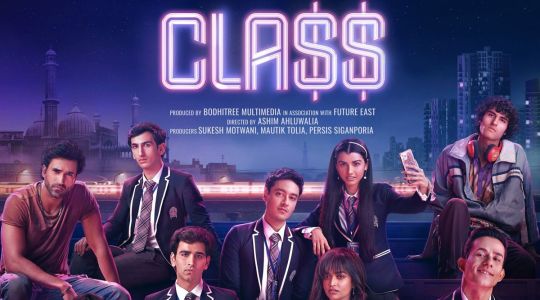
April 18, 2023
by Inakshi Chandra-Mohanty
The word ‘class’ is multifaceted. It stands for the hierarchal structure that separates the rich and the poor. But it is also indicative of the weakening of the cultural divide between those of different statuses as the disparate worlds merge in the same ‘class’. In the Netflix web series, Class, three students from lower-income families receive a chance to attend an exclusive school in Delhi and intermingle with those from higher status families leading to inevitable clashes, mystery, and death. These three misfits in a school of elitists navigate relationships and politics as they attempt to forge a place for themselves.
Directed by award winning documentary and indie filmmaker, Ashim Ahluwalia, this remake of popular Spanish show, Elite, sticks to the original storyline and character development. It has the same weak points as Elite. The mystery is not captivating enough, the dramatic development is superficial, and the twists do not lead to a satisfying conclusion. But, as someone who found the original average, I was pleasantly surprised by the detailed, intense world created in Class. For a show that promotes itself on the basis of glitz and glamour, it is surprisingly mild. The aesthetics are raw and real. It fully delves into the underbelly of Delhi and builds up the city as a character of its own. The production design and focus on differentiating the lives of those living in gorgeous bungalows from the ones living in slums is immaculate. This drastic change from the overdone glamorous aesthetics of Elite works in its favor. These characters and situations feel far more relatable.
There is also clear thought put into ‘Indianizing’ this foreign show. The themes are reoriented for the Indian audience. From mentions of caste and its influence on income disparity, to the emphasis on Muslim discrimination, the series highlights prominent issues in present-day Indian society.
While Class is definitely more interesting than Elite, the show isn’t without its flaws. The series consists of a relatively new cast and attempts to create an impact through these young, fresh faces. However, the immaturity of this younger cast is apparent. Many of the actors have a limited range, doing well in lighter scenes but unable to achieve the emotional impact necessary in dramatic moments. I wish they had cast a more effective person in the lead role. While a talented actor, Piyush Khati as Dheeraj does not have the charisma to carry the show. He gets overshadowed and lost in the crowd despite a majority of the show relying on his narration.
Zeyn Shaw as Veer is also disappointing. His limitations as an actor are apparent in comparison to Madhyama Segal’s sharp acting as his romantic interest Saba. From an intellectual perspective, Veer and Saba are the most intriguing couple and I will continue to be excited to see them in future seasons. But the butterfly inducing chemistry isn’t there. The Veer and Saba on paper does not translate to the screen.
Class is anything but perfect. Due to the uninteresting story elements and the limited acting ability of many of the cast members, the empathetic touch is missing. However, the well written characters and important themes kept my interest alive. It is a powerful take on the massive class differences that exist in modern day Indian society.
#bollywoodreviews#Class#ashimahluwalia#madhyama segal#zeyn shaw#piyush khati#gurfateh pirzada#chayan chopra#netflix india#hindi films#indian cinema
0 notes
Text
Chup Review
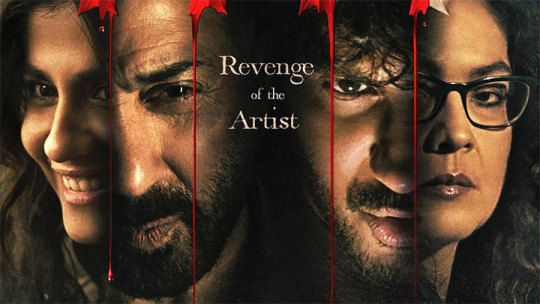
November 27, 2022
by Inakshi Chandra-Mohanty
Many films have been made on the film industry. Films that show the intricacies of the process through the eyes of an artist integrated within it. But few have shed light on the tumultuous relationship between a filmmaker and a film critic. The two professions are constantly at loggerheads. It’s a never-ending battle due to the refusal of each to understand the job of the other. Chup uses a fictional tale of a serial killer that targets film critics to comment on the filmmaker-critic relation. This psychological thriller relies less on suspense and more on the interesting characters and passionate story that attempts to burn bridges between the opposing professions.
The strongest aspect of Chup is the intrigue. The buildup of how these four characters and two parallel stories will converge. And the way in which the contrasting elements of the multiple narratives lead to an exhilarating climax. This is further enhanced by its passion for the art of cinema. Writer-Director R. Balki made this film out of a pure love for the process of filmmaking. It is an ode to classic cinema with many references to the art behind old school romance. It specifically pays homage to Guru Dutt and his classic film, Kaagaz Ke Phool, and focuses on the relevance of that film in the filmmaker-critic debate.
Though the film is a multi-starrer, Dulquer Salmaan is the star of the show. Elaborating on the details of his performance would reveal too much of the mystery, but his ability to transfer between the different shades of his character is brilliant. While the remaining actors do well in their respective roles, much of the film’s impact rests on his shoulders.
Where Chup falters, is in its investigative suspense. While the police chase of this brutal criminal is smart, the characters pursuing the case have barely any background or emotional depth. Despite having considerable screen space, Sunny Deol has little to do in the film. Though he and Pooja Bhatt do well in the roles written, they have little impact due to the lack of characterization. Their characters are nothing more than props in the investigation.
Despite these minimal flaws, Chup stands out due to the themes it explores, albeit in a jumbled state.
It is natural for a filmmaker to feel disheartened on reading a scathing review. However, it is also important all types of reviews to exist. Otherwise, there will never be a standard for good cinema, filmmakers will be stuck in the land of mediocrity and no one will aspire for any better.
As a filmmaker and a film critic, someone who has seen both the blood and sweat that goes into the simplest details in a scene and someone who has watched countless films forming strong opinions on them, this divide is something I have witnessed myself. This is a battle I am constantly fighting within. That is why Chup resonates so deeply with me. It is a confused film, one which mirrors my constant confusion between the two worlds. Chup is the product of an artist and a critic, one that cannot differentiate between the two. That’s why the messaging of Chup is so muddled. Because on one hand it puts out valid points in the defense of film criticism and on the other hand romanticizes the life of an artist engulfed by the world of cinema and pained by the words of critics.
Through its confused state, it is not clear whether Chup has a defined message. The struggle between art and criticism will continue to remain. But somewhere in the midst of all the craziness, there is a sense of peace. A calm that sets in only on the union of the critic and the artist. Chup is at its best when the two are together, making their monotonous moments come to life with their common passion for cinema. And that may be the message that the filmmakers strive to convey. That just like Chup reaches its highest peak through the bonding of the critic and the artist, cinema will reach greater heights through a combined effort. Both the critic and the artist are necessary to make great cinema, and neither works without the other.
#bollywoodreviews#chup#dulquer salmaan#sunny deol#shreya dhanwanthary#pooja bhatt#R Balki#zee5#bollywood#Hindi films#indian cinema
10 notes
·
View notes
Text
Gangubai Kathiawadi Review
April 28, 2022
by Inakshi Chandra-Mohanty

From the comfort of a wealthy barrister’s family to the distressing confinement of a brothel, a young woman’s life is drastically transformed overnight. Her world is shattered and her naivety crushed as she struggles to grapple with her new reality. Dealing with scandalous labels and a lack of respect, she slowly rises in stature becoming a formidable force in the ‘gallis’ of Kamathipura. Gangubai Kathiawadi is a motivational narration of this young girl’s journey. It sheds a new light on the resilient women behind what is considered to be a ‘disgraceful’ profession.
Sanjay Leela Bhansali has the ability to create a unique universe that sucks the audience into its extravagance. All his films are renowned for their grand visuals and this one is no exception. However, this is the first time his true expertise as a director and editor comes forth. His previous films showed off his attention to detail and love for marvelous universes but due to flimsy scripts these films were never able to rise above the beauty. In Gangubai Kathiawadi, the strongest aspect is the script. The film relies on character development, and creates a host of identifiable characters, with Gangu at the forefront. The visuals serve as a means to support the emotionally-driven narrative. From the set design that transported us into this fantastical world, to the melodious soundtrack that enchanted us, to the metaphorical editing that made us aware of Gangu’s plight. Our emotions are tethered to the narrative due to the brilliance in filmmaking.
The only weak element of this film is the romantic angle. Gangu’s relationship with Afshaan serves only one purpose, to elevate the two beautiful musical tracks picturized on them. The passionate chemistry they share is delightful to witness but barely meaningful. The tragic, painful aspect of a prostitute falling in love is never explored, and their bond remains at the surface level. This is the sole failing of an otherwise immaculate script.
Despite the weakness of the love story, film debutante Shantanu Maheshwari does an amazing job in the role of Afshaan. As a dancer, his movements are lyrical and make the romantic sequences even more enchanting. Other standout supporting performances include Seema Pahwa as the ruthless brothel owner, Sheela Mausi, and Indira Tiwari as Kamli, Gangu’s closest friend and confidante. Both of them fully lose themselves in the lives of the women they are portraying thus creating characters that are extremely memorable. While the supporting actors are brilliant, the weight of the film rests on Alia Bhatt’s shoulders. As the primal character that drives the narrative, Gangu is no easy character to portray. Alia Bhatt has time and again proved her prowess as an actress, and this is one more phenomenal performance by her.
Gangubai Kathiawadi is a story of women empowerment, that shows a different perspective of the lives of prostitutes. This rich, detailed view highlights the emotional aspects of the lifestyle including strong female camaraderie, failed romantic pursuits, and slowly developing bonds of respect. It shows the plight of these women, their daily struggles with their sense of self and at the same time glorifies their strength. Overall, the film is a powerful take on a story of respect and courage and serves its purpose of sensitizing the audience to the lives of these women.
#bollywoodreviews#gangubai kathiawadi#sanjay leela bhansali#Alia Bhatt#netflix india#bollywood#Hindi films#shantanu maheshwari#seema pahwa#indira tiwari#indian cinema
11 notes
·
View notes
Text
Oscars 2022: Best Feature Film Nominees Ranked
April 12, 2022
by Inakshi Chandra-Mohanty
1. Drive My Car

Despite being in a language I don’t understand and set in a culture I know little about, this film felt the most personal out of all the nominations. It’s an engrossing tale of a man struggling with grief and forgiveness. Through his interactions with the various people around him and his deep involvement in the play he’s directing, he gains a different perspective to life. Of those, the most unconventional relationship he forms, is with his driver, as they bond over their respective griefs. Though there is nothing exceptional about the storyline, Drive My Car excels due to the deeply etched out characters and the emotion driven scenes. The film builds an experience revolving around the world of the main character whose grief is personally captivating. His screen presence and the growth in his character are endearing. The film also consists of beautifully framed shots that it even more profound. Overall, it is an enjoyable and powerful film that I will love watching again.
2. CODA

The film that won the title of best picture is the one of the most deserving. A remake of French-Belgian film, La Famille Bélier, with story elements similar to Sanjay Leela Bhansali’s classic Hindi film, Khamoshi: The Musical, CODA follows a child of deaf parents who wishes to pursue a career in music. It is an engaging storyline, with strong buildup, and emotionally intimate characters. We are drawn into the main character’s struggles with her identity and at the same time enlightened about the deaf community. It is an overall package with a combination of drama, comedy, and romance, behind a powerful journey.
3. West Side Story

When a classic is remade it struggles to live up to the original and endless comparisons cause it to lose significance. However, as someone who has not seen the original film adaptation or theatre play, and has little knowledge of the plot, I was able to view this film with a fresh outlook. West Side Story is a ridiculously outdated story of love at first sight but Steven Spielberg’s direction makes even the absurd believable, romantic, and passionate. He creates a unique world full of artistic brilliance. The amazing set design and detailed lighting and cinematography are used in a metaphorical sense, a style which is rare in recent films that focus on realism. The use of the visual medium to convey emotions adds much more depth to an otherwise superficial plot and creates an entertaining output. West Side Story is cinema in its purest form.
4. Dune

Dune is a visually stunning masterpiece that serves as a powerful origin story for a hero in a science fiction universe of emperors, houses, and outcasts. The film is about the power struggle between outsiders over a land of spices, as the original inhabitants of the planet continuously suffer. This intriguing storyline of a new world has multiple references to real world colonialism. Alongside the symbolism, it also provides identifiable characters, whose mental struggles are not much different from ours. The hero is struggling between two different identities and family histories. His father’s title and his mother’s power clash ultimately leading to an identity crisis within. The film is symbolically, visually, and personally powerful. However, while it is captivating, it isn’t entirely satisfying. The development is extremely slow with focus on pulling us into this world rather than into action. Yet, it achieves its intention and provides a great setup for a sequel.
5. Don’t Look Up

Don’t Look Up is a hilarious satire that uses the arrival of a deadly comet as a metaphor for current real-life issues that can lead to the end of the world. This black comedy portrays “comedic dread” as it transitions constantly and abruptly between comic leisure and resonating themes. It is hilariously depressing which shows how effective it is. While the script is brilliant, the execution veers between a powerful satire and a lengthy comedy sketch, sometimes coming off as a bit too amateurish. The topic is important but the filmmaking could have been better. However, the grand cast, with their brilliant comic timing keep the film engaging as the crisis in the narrative ripples out of control.
6. King Richard

A heartwarming biopic on the growing years of tennis players Serena and Venus Williams, King Richard beautifully shows the contrast between the taste of success and the struggles of being a person of color in America. As these two youngsters rise, they also confront the racism and dangers around them both from outside their community and within. The focus of the story is on their father and his guidance in their journey, giving it a unique perspective in comparison to the typical biopic. But the arc of the narrative is conventional. It has a predictable layout with an obvious conclusion. The journey isn’t unique enough for the film to be too different. However, it is engaging and focuses on important issues making it a worthwhile watch.
7. Belfast

The life of a young boy is transformed overnight as he is confronted with religious divides and cultural disparities in 1960s Ireland. A semi-autobiographical story set in a tumultuous period, Belfast follows a family that grapples with the changing political climate and economic struggles within their community. The themes are relevant to children today who struggle with understanding the difference between “good” and “bad’ as adults around them propagate religious extremism and racial divides. Filmed in black and white, the film is artistically brilliant using the most powerful aspects of non-color storytelling (lights, shadows, and framing). But the story and characters are not impactful enough for the cinematic techniques to have a strong effect. The plot is slightly engaging and enlightening, but not as personal as other critics deem it to be. And there is very little to connect to in the characters, making it an emotionally weak narrative. However, it is a meaningful film, making it worth a one time watch.
8. Nightmare Alley

In a neo-noir remake of the 1947 film of the same name, Guillermo del Toro’s Nightmare Alley follows a young man’s rise and fall in his ambitious drive to boost his psychic career. Though the overall story arc is powerful, the progression is weak. It takes time to develop, focusing instead on visual storytelling. For a majority of the first half, there is no clear direction. Much of the development seems pointless with no proper end in sight. Despite a weak buildup, the film has all the makings of a noir. An ambitious, yet foolish male character, is enchanted by a femme fatale, leading to his ultimate destruction. The camerawork and editing also take the essence of the noir style, with unique framings and contrasting greens and yellows. But the aesthetic visuals are not enough to support the weak script.
9. The Power of the Dog

Based on a 1967 novel of the same name, The Power of the Dog, is about a rancher who resorts to intimidation when his brother brings home a new wife and her son. As time passes, however, he slowly discovers and understands parts of himself that he had repressed for years. The film subverts the cliches of a typical Western by questioning the very ideal on which it is built, the idea of masculinity. As the characters struggle with their sense of self, their relationships with one another change, leading to an interesting climax. Thematically and visually the film is powerful, but the metaphors are not worthwhile if the film is not engaging enough. It is extremely slow in the first half only picking up pace as the narrative begins to unravel. The context for that narrative is important but requires much patience and full attention. It includes many scenes of solitude which can be unnerving when there is little emotional attachment to the characters. While the film is certainly impactful in parts, the themes aren’t powerful enough to carry the two hour long film.
10. Licorice Pizza

Licorice Pizza is the weakest of the Oscar nominations this year. It is a coming of age drama about two youngsters who grow, find themselves, and fall in love in 1970s California. While the film is slightly fun and cute, there is nothing spectacular about it. It has a positive start with a unique ‘first meeting’ between two prospective lovers but quickly begins to meander. There is no defined concept which makes it essential for character development to drive plot. However, from the onset there is a disconnect from the two main characters and the period in which it is set. Maybe it is the cultural context, but many dialogues, jokes, and references were confusing to me and is possibly why I personally had difficulty connecting to the film. But, despite its flaws, the film was a decent watch.
#oscars#oscars2022#best feature film#drive my car#coda#west side story#dune#don't look up#king richard#belfast#nightmare alley#the power of the dog#licorice pizza#lists
2 notes
·
View notes
Text
Yeh Kaali Kaali Aankhein Review
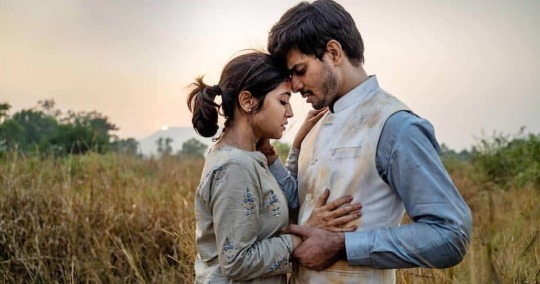
January 24, 2022
by Inakshi Chandra-Mohanty
“For she had eyes and chose me” - Othello.
It’s ironical that a quote that refers to absolute trust in marriage is chosen to represent the story of a man whose life is riddled with lies and deception. But it is not the metaphorical meaning of this quote, it’s the literal one that encapsulates the narrative of this show. It’s a story in which a woman’s gaze and her possession become a cage. In Yeh Kaali Kaali Aankhein, Vikrant (Tahir Raj Bhasin), an engineering graduate with big dreams and high hopes, is obsessively pursued by Purva (Anchal Singh), a politician’s daughter. His attempts to escape only drag him further into the darkness, slowly transforming him into a version of the people he despises.
Though there are many interesting twists throughout the narrative, the story is no novelty. It’s a simple tale of love, power, and revenge. But it is this simplicity that makes the execution so powerful. Writer-Director Siddharth Sengupta, known for his extensive work on television, is a master storyteller. He manages to make even the predictable fresh. Despite having an idea of what will happen next, the when and how of each situation is surprising. Thus, the suspense never falters.
All the characters are extremely well-written. But the show rests on the shoulders of Vikrant and Purva. Vikrant is a character cornered by people whose concern is anything but his happiness. We empathize with his helplessness yet feel infuriated by his lack of agency. From agreeing to go to Akhilesh’s office for the first time, to telling Purva that there’s no one in his life, Vikrant consistently makes bad decisions pushing him deeper and deeper into the mess. Yet, we can’t help but follow him and see his journey as he navigates the intricate web of politics, family, relationships, and love.
His class renders him powerless. Thus, his earlier decisions could be attributed to fear. But as he delves deeper into this dark world, he begins to lose integrity. In an effort to eliminate the family, he becomes one of them. We want Vikrant to succeed, not because we believe he is right, but because he has already lost so much of himself in this struggle, that it would be a shame for him to lose.
Purva is the anchor to Vikrant’s decisions. Her role is that of a femme fatale. To some extent, Vikrant is driven by his fears and insecurities. But his initial spate of bad decisions are made due to his inability to refuse her. She is an alluring and manipulative woman. The class disparities challenge traditional gender stereotypes. Vikrant’s middle-class background leads him to being more subdued and silently complicit, while Purva’s upper class upbringing, has made her into a bold woman giving her the power in their relationship.
Tahir Raj Bhasin is excellent as Vikrant. He’s not only the main character, but also the narrator. It is a major responsibility to hold together the narrative through one’s voice, which he does effortlessly. Anchal Singh is also fantastic. She brings out the two opposing sides of Purva with such grace. Transitioning between the sweet, caring daughter, and the manipulative, possessive lover is no easy task. The remaining actors all do well in their respective parts, but those characters have little to offer to the narrative.
Yeh Kaali Kaali Aankhein has its flaws. It’s not a riveting, edge of the seat thriller. But it is an entertaining show. The subversion of the predictable along with the growing character development make the show an engaging watch.
#bollywoodreviews#yeh kaali kaali aankhein#netflix india#Web series#bollywood#Hindi films#siddharth sengupta#tahir raj bhasin#anchal singh#shweta tripathi#saurabh shukla#brijendra kala#indian cinema
1 note
·
View note
Text
C U Soon Review

September 14, 2020
by Inakshi Chandra-Mohanty
A one hour thirty-eight minute film, shot entirely on an iPhone, in eighteen days, during the lockdown in India, emerges as the latest achievement for the Malayalam film industry. Directed by Mahesh Narayanan of Take Off fame and starring Fahadh Faasil, Roshan Mathew, and Darshana Rajendran in lead roles, C U Soon is a romantic tech thriller that follows a young couple’s budding romance and the events that follow the disappearance of the girl. When Anu (Darshana Rajendran) goes missing, Jimmy (Roshan Mathew) enlists the help of his tech savvy cousin, Kevin (Fahadh Faasil), to find the girl and unleashes a pandora’s box of secrets.
It’s a fresh take on a done-to-death story. The concept of the film is extremely predictable and doesn’t leave much room for imagination. But due to the novel filmmaking and well sketched out characters, the unoriginality of the plot isn’t concerning. The entire film plays out on the laptop and phone screens of the different characters, as the video call romance turns into a digital hunt for the truth. The undertones of the film are reminiscent of the 2018 film, Searching, which had a similar format and an equally engaging plotline. Yet, this experimental venture is molded for the Indian audience, with a beautiful play on emotions through the dormant screens. While the technology marvel is the central attraction in this film, it doesn’t overpower the storytelling techniques and raw emotions that build audience concern for the characters.
None of the characters ever dominate the entire screen due to the nature of technological devices, and the illusion of portraying a computer screen. Yet, despite being limited, the actors manage to emotionally enthrall the audience with their performance. From Dhanya Rajendran’s portrayal of an emotionally drained girl caught in a never-ending struggle to Roshan Mathew’s performance as a love-struck boy, confused and frustrated by the web of lies surrounding him, every actor brings out the the emotions with a sincerity that requires stronger acting to make their presence felt on the small screen. The most powerful of them all was Fahadh Faasil. His character is an outsider who gets engulfed into the world of the young girl as he vies for the truth. Kevin is the only character who has multiple scenes on screen on his own as he surfs through Anu’s data for clues. There are many moments that his emotions take over as he realizes what he has discovered and in those moments, Fahadh Faasil excels.
Mahesh Narayanan not only directed the film, but also conducted the visual editing for the film. That included the swift movements between screens and the close up camera angles that highlighted the eyes of the characters. It is often said that actors speak through their eyes. Pain, anger, love, and a variety of emotions can be expressed solely through the eyes. Thus, Narayanan’s decision to edit in many close ups of the eyes during vital scenes, led to a larger emotional impact on the audience.
C U Soon begins as an experiment but ends as a powerful romantic drama. Despite its flaws, the excellent acting and editing make the film a worthwhile watch.
#MalayalamReviews#c u soon#mahesh narayanan#fahadh faasil#roshan mathew#darshana rajendran#Malayalam Cinema#indian cinema#amazon prime video#take off
1 note
·
View note
Text
Bulbbul Review

June 27, 2020
by Inakshi Chandra-Mohanty
In the last few years, Indian filmmakers have reinvented the horror and supernatural genre for the Indian audiences. Taking inspiration from Indian mythology and literature, these new-age films have left behind the conventional use of jump scares and ghosts in havelis, that dominated the narrative of early Indian horror. Many of these tropes were directly lifted from Hollywood films and placed in an Indian setting leaving little room for innovation. But lately, filmmakers are exploring different territories in this genre. From Pari to Tumbbad, the conventional horror film has been transformed into a vivid display of mythology and fantasy, and now the latest edition to this list is Bulbbul. A supernatural period drama, the film traces the life of a child bride as she matures into young woman presiding over a fragmented household. In the midst of her reign, a series of murders take place and her London return brother-in-law decides to uncover the truth behind the rumors that this is the work of a chudail (witch).
The film is nowhere near perfect. The progression of the story is mundane and predictable. Yet, it is difficult not to marvel at the ambitious nature of the concept and the novelty with which it is executed. A lack of suspense and thrill don’t take away from magnificence of the tale being told. The slow, brooding nature of the story revels in the horrific themes explored in the film. Based in patriarchal sentiments, the film emerges as a feminist tale and twists the age-old terrorizing legend of the chudail into the story of an audacious young woman, plagued by a traumatic past. The roles are reversed as demon becomes human and human becomes demon. The film isn’t meant to be a horror film set in a fantasy world with unknown evils. Instead, it is reflective of the world that we live in, and the demons within us that bring out the demons within others.
Writer-director Anvita Dutt has built a fantasy aesthetic out of a real world in her debut film. The film is meticulously put together. As a director, she has excelled. However, as writer, she falters. Conceptually and structurally, the writing is strong, but some of the character are half-baked. The two characters, which are extremely well written and have the strongest arcs are Bulbbul and her sister-in-law, Binodini. This may be due to the unusual bond between them. They are the antithesis of one another. Bulbbul defies all odds to do what no other woman would dare, while Binodini is the one to conform, relishing in the luxury. Yet, they are not much different. They have both suffered. But, Bulbbul’s suffering becomes her strength as she refuses to become another Binodini. While she had many complaints with the latter, a victim turned victimizer, she also held a bit of sympathy for this woman who had suffered a similar plight to hers.
Compared to these strong female characters, the male characters are poorly written. They are all written in relation to Bulbbul, thus their own personality and motivations are clouded by Bulbbul’s character development. Satya and Dr. Sudip are the most disappointing. They are the characters that compose the conflict in the climax. Yet, that conflict is only believable when the characters’ arcs are clear. Satya’s anger towards the chudail and his behavior at the end isn’t justified, while Sudip’s mysteriousness remains a mystery. Maybe this can be attributed to the fact that the writer is a woman, making a film about women. Thus, the focus heavily shifted towards the female characters.
These characters would be just words written on paper if the actors hadn’t brought them to life. Tripti Dimri essays the titular role, Bulbbul, and masters the role with elegance. This is the most layered character in the film with the strongest shifts in personality. The same smile that propagated innocent charm as Laila in Laila Majnu displayed cunning boldness as Bulbbul. While in her former film, she fit the part and provided a great companion to Majnu, in this film, she owns every frame and displays consistency in complexity. It’s not just an improvement. She has truly reinvented herself for this role. Paoli Dam as Binodini is equally as admirable. She emotes so seamlessly, though her screen time is considerably less than the former. Avinash Tiwary, Rahul Bose, and Parambrata Chatterjee are apt in the roles written for them.
While Anvita Dutt is definitely the master of this project, due credit must also be given to Clean Slate Productions, helmed by Anushka Sharma. The company has been backing ambitious, content-driven projects with a focus on new talent. Even though Bulbbul and the company’s previous horror outing, Pari, are not perfect, both have had a large impact on the approach to horror in Indian cinema. Hopefully, as more and more artists begin to experiment with the genre, these great concepts will lead to great cinema.
Though with its flaws, Bulbbul scores on many points including story, acting, soundtrack, camerawork, editing, and direction. This is a film that I would have loved to watch on the big screen just for the visually stunning imagery, consisting contrasts of red and blue, and the haunting background music. It has a charm, an elegance, and a vision that is unmatched. This fairytale with a sinister twist is one to remember.
#bulbbul#netflix india#bollywoodreviews#bollywood#Hindi films#anvita dutt#anushka sharma#clean slate films#tripti dimri#paoli dam#Avinash Tiwary#parambrata chattopadhyay#rahul bose#siddharth diwan#amit trivedi#pari#indian horror films#horror genre#laila majnu
76 notes
·
View notes
Text
Sethum Aayiram Pon: Death as a Celebration of Life

May 6, 2020
by Inakshi Chandra-Mohanty
Disclaimer: This article contains SPOILERS.
It is somewhat ironic that a film that begins and ends with death speaks to the revival of a dying tradition. Oppari, an ancient form of lament in the Tamilian culture, is the crux of this story, around which the characters evolve. According to this custom, women will sing an improvised song, with lyrics that serve as eulogy to the person that has died. Another part of this custom involves dressing up the corpse and adorning the corpse with makeup. While this seems like a beautiful celebration of life and an art form that needs to be preserved, the stigma of being connected to death, has led to the slow death of this beautiful practice. In Sethum Aayiram Pon, Meera (Nivedhithaa Sathish), a cinema make-up artist, returns to her village to a strained relationship with her grandmother, Krishnaveni (Srilekha Rajendran), an Oppari singer. There she is immersed in traditions foreign to her as she gets to know her grandmother, whom she was separated from as a toddler, and develops a bond with Oppari make-up artist, Kuberan (Avinash Raghudevan), with whom she had escaped a wedding at the age of five.
The custom of Oppari isn’t the central theme of the narrative, but serves as the basis to explore larger themes of life and death. Meera is a character who has suffered the death of both parents and is now flung into a universe where death is seen as a celebration. While everyone is clearly in mourning, the presence of dancers, music, singers, make-up artists, and more, make the gathering feel like a grand occasion. The birth of this film commences with the death of an individual. Meera’s first foray into the village is into one such celebration as she witnesses her grandmother sing an Oppari song to commemorate one of the villagers. As she spends more time with the people and mends her relationship with her grandmother, she slowly starts to become one of them. Her career as a make-up artist allows her to participate in the customs, initially due to a hurt ego and eventually from the heart. When she does the make-up for the little girl, Rani, it’s not only due to Kuberan’s refusal, but due to her true belief that the girl’s dream of dressing up like a heroine deserved to be fulfilled.
After the young girl’s death, Meera has a lovely conversation with her grandmother on life, death, and the volatility of life. Krishnaveni endows wisdom on her granddaughter by saying, “Death is inevitable. If death ceases to exist, humans will become idle and lazy. Just like birth, death should be celebrated as well.” This one quote determines the essence of this film. People are born to die. Everyone will go one day and life is unpredictable. Thus, death should not be seen as a depressing instance, but should be viewed in the larger perspective of life. Just as people celebrate a life entering this world as potential for the future, people should celebrate a life leaving the world for they have served their purpose.
The lines between birth and death are blurred as the film opens and closes with the same ritual, only difference being the person who is performing it. At the end of the film, Meera ultimately replaces her grandmother, singing an Oppari song at the latter’s funeral. The film culminates with death completing the full circle of life and signifying the end of Meera’s journey. She has finally imbibed the customs of her ancestors and understood the philosophy behind life and death. Birth and death are no different from one another. All are part of the cycle of life.
#sethum aayiram pon#anand ravichandran#nivedhithaa sathish#srilekha rajendran#avinash raghudevan#TamilReviews#Tamil films#indian cinema
5 notes
·
View notes
Text
Thappad Review
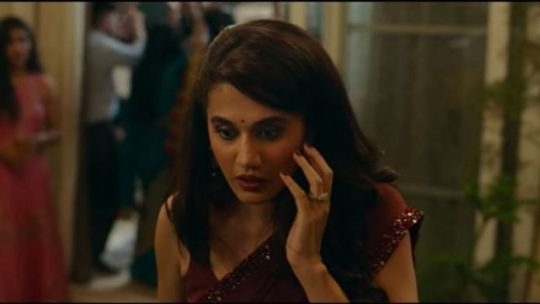
March 4, 2020
by Inakshi Chandra-Mohanty
Relationships survive on compromise. Both partners must agree to make some changes in their lifestyle to adapt to one another’s needs. But, this cannot happen at a loss of respect. In Thappad, Amrita (Taapsee Pannu) is a housewife by choice, not by pressure. She derives immense satisfaction from her daily routine and never imagines a life separate from that. However, everything changes after her husband slaps her during a violent fight with his boss. She begins to view their relationship, his behavior, and everyone else’s reactions in a different light, and thus begins a complex analysis of a modern day Indian marriage.
Thappad is, on the surface, a story revolving around domestic violence. The film deals with the build up to and aftermath of a husband slapping his wife for the first time during a house party. But the film is not a one toned analysis of women’s rights and feminism. It is a take on the entitlement and subtle patriarchal sentiments that dominate the culture in India. It is about male privilege and how it has seeped into the lives of even those men who believe that they are being liberal. From a patriarchal perspective, the slap is a supposedly trivial incident that disrupted the lives of these regular people living regular lives. But the film shatters that perspective by fleshing out the underlying patriarchy. The audience realizes that the slap isn’t the cause of differences between the husband and wife. It’s just a trigger that allows this woman to see all the casual sexism that she had been ignoring. And the aftermath of the incident is all about moving ahead rather than forgiveness and emotions. Everyone around Amrita is adamant that she let go and move on. Nobody tries to understand what her feelings are or attempts to point out her husband, Vikram’s, fault. On the other hand, Vikram takes her for granted and regards his rant to suffice as an apology. The problem lies in the mindset of people, not in the act of slapping.
Writer Mrunmayee Lagoo and Writer-Director Anubhav Sinha take a simple concept and weave it into an intricate drama. They create a multitude of characters of different mindsets, different lifestyles, and different classes, who are all somewhat connected to and affected by this incident. From a neighbor who is a single mother, to a maid who is constantly suffering domestic violence, to a lawyer unhappy in her marriage, to a mother who has compromised in her relationship and is unsure of her daughter’s decision to not compromise, each character is beautifully sketched out and delivers a different perspective to the incident. Apart from these characters, there are so many more that shape this narrative, and the decisions that the lead character takes.
The film boasts of an excellent star cast. Seen in a completely different avatar from her previous roles, Taapsee Pannu shines as the simple and docile housewife, trying to regain her respect after a trauma-inducing incident. Amrita is not rebellious. But she is also not one to lie low when someone tarnishes her respect. This role requires someone who can speak without words. For most of the film, Amrita is mostly silent, internalizing what is happening around her. But in that silence, her face reveals her thoughts. During the interactions between the husband and wife, as he attempts to reconcile with her, the hypocrisy in his words are reflected in her expressions. Pavail Gulati is also brilliant, as the husband troubled by his own problems, yet inconsiderate of his wife’s emotions. Apart from these two, the remainder of the cast is equally as fantastic. Ratna Pathak Shah, Dia Mirza, Kumud Mishra, Naila Grewal, Tanvi Azmi, Maya Sarao, Geetika Vidya, Manav Kaul, Siddhant Karnick, and everyone else fit their diverse roles perfectly. Each character represents a different aspect of society. Each one of us is in one of those characters so it is very important for them to be portrayed accurately.
Thappad is not just an important film, it is also an extremely well made one. Other than one or two characters that have flawed storylines, and a bit of underlining at the end that goes overboard in proving the point, the film is almost perfect, with an immaculate attention to detail. From the well-crafted dialogues, to the realistic characters, everything in this film is meant to serve a purpose. This film deserves to be watched by all men and women, who are consciously or unconsciously supporting patriarchal ideals on a daily basis. It may not be everyone’s story, but it is one that affects everyone. Thus, if not for its artistic merit, watch it for its message, which will make everyone question his/her own ideals and behavior.
#bollywoodreviews#bollywood#thappad#Anubhav Sinha#mrunmayee lagoo#Taapsee Pannu#pavail gulati#ratna pathak shah#dia mirza#kumud mishra#naila grewal#tanvi azmi#maya sarao#geetika vidya ohlyan#manav kaul#siddhant karnick
65 notes
·
View notes
Text
Top 10 Hindi Films of 2019
February 7, 2020
by Inakshi Chandra-Mohanty
1. Gully Boy

India’s official entry for the 2020 Oscars, and the best Hindi film of the year, is the rap spectacle, Gully Boy. Loosely based off of the lives of two young rappers in Mumbai, this film is the story of Murad, a Muslim man living in the slums, who realizes his dream of becoming a rapper, as he deals with a dysfunctional family and a varied set of friends. As a story of a man’s rise to fame, this film takes the clichéd route. Yet, director Zoya Akhtar manages to set this clichéd story in a beautifully crafted world of its own. From the characters to the situational conflicts, everything is written with such complexity that makes the audience invested in this world. A musically-driven film, with intriguing story progressions, Gully Boy is one of the finest films to come out of Indian cinema in the past few years.
2. Section 375

“Justice is abstract. Law is a fact.” At the beginning of the film, lawyer Tarun Saluja says this line to aspiring law students, as he expresses his own sentiments of siding with what can be factually proven. Section 375 is a film that treads this blurred line as it follows a court case of a woman who accuses her boss, a famous film director, of raping her. As the audience, it is difficult to determine who is telling the truth till the very end, revealing the ambiguity of such cases, and whether justice is truly possible in such intimate and personal affairs. There is no over the top screaming in the court, or unnecessary preaching to further the point, as is usual in Indian court dramas. Instead, the case is meticulously described, going into laws and facts that most people who have never stepped in a court are not familiar with. The reality and truth are so conflicted throughout the film, that by the end, the audience is equally as confused as the characters, which is the intended outcome of this film.
3. Soni

It’s difficult to make a film on women empowerment without getting too preachy or exaggerating the female characters. But this film does just that. It follows two female police officers as they navigate the male-dominated profession, while also combatting with subtle patriarchal sentiments in their homes. In such, they become less a commanding officer and her mentee, and more comrades, who understand each other’s struggles as women in a male-dominated world. The film doesn’t overload with the feminism. Instead the focus is on the emotional development of the women as the audience is made to feel the subtle patriarchy they face on a daily basis. For women, this film is a reflection of their life on screen, and for men, it is an insight into the privilege they have in even small things in life.
4. Article 15

Caste is a topic rarely discussed in Hindi cinema. While quite popular in the South, in Tamil and Telugu films, caste discrimination is not as prevalent an issue in Hindi films. Therefore, a film like Article 15 comes as a hopeful light in the dark reality of Indian society. It is a fresh take on this age old practice. Ayushmann Khurrana leads the way in this Anubhav Sinha thriller, as a Brahmin police officer, Ayan, investigating the murder of two Dalit girls in the small village where he is newly posted. As a man who has been shielded from the caste divides due to his upbringing in a progressive Indian city, Ayan was shocked by the extent to which people would go. The film doesn’t shy away from the discomforting realities and gives importance to the Dalit voice, whether it is police officers working under Ayan or the families of the girls who are desperate for justice. Article 15 is striking and relevant, especially in Indian society today, where caste discrimination is prevalent in all sectors, yet rarely discussed in any form of media.
5. Uri

Despite all reports of the film being jingoistic, Uri is one of the most well-written, immaculately choreographed, and thrilling army films in India. It expressed patriotism in just the right measures. Based on the true story of the surgical strikes in retaliation to the 2016 Uri attack, this film follows Major Vihaan Singh Shergill, the leader of the mission, as he avenges the death of his comrades, one of whom was his brother-in-law. From the details of the planning to the emotional characterizations of the people in the film, it delivers. Though there are some moments where the film takes advantage of typical clichés, the remainder of the film is a stylistic, well-researched entertainer.
6. Mere Pyaare Prime Minister

Putting a child at the center of a serious and important story, requires awareness and sensitivity. In this film about a single mother who is assaulted at night when she goes out to openly defecate, director Rakeysh Omprakash Mehra uses the emotional vulnerability of her son to highlight the issue of necessary bathrooms in slums. Despite not understanding what exactly happened to his mother, he is able to feel the emotional change within her after that incident and resolves to make her happy again by tackling the issue at hand. The simplicity with which the story is told reflects the young boy’s point of view. In this way, the film becomes a hopeful version of what could have been a hard-hitting drama and thus relays an important message to people of all ages.
7. Mard Ko Dard Nahin Hota

Superhero and vigilante films are at a minimum in Hindi cinema. Preceded by films such as Bhavesh Joshi, Krrish, and Mr. India, this Deadpool-inspired action comedy brings a new flavor into the Indian version of this genre. Surya is born with a rare disorder, making him immune to the feeling of pain. While this may seem like the perfect origin of a superhero, it ends up being very dangerous, as his inability to distinguish when he has been gravely hurt can lead to a fatal end. Therefore, he is kept in deep observation, and trained by his grandfather to take care of himself. Later on, he teams up with his childhood friend, Supri, and his childhood hero, Karate Mani, to defeat Mani’s evil twin, Jimmy. Filled with some great action sequences and hilarious dialogues, this film fits all the bills for a perfect origin story.
8. Hamid
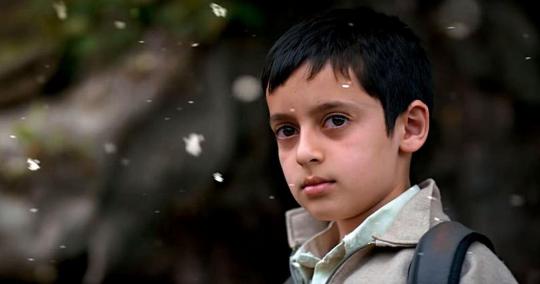
A young boy, Hamid, desperate to find his missing father, places a phone call to God, thus beginning an intimate relationship with an unknown voice over the phone, who happens to be an Indian soldier, Abhay. Based off of a play, this heartwarming tale emphasizes the importance of human relationships in the face of religion, divisiveness, animosity, and violence. In the reality of war-torn Kashmir, Hamid and Abhay are on opposite sides of the conflict. The former is a Muslim whose father has been taken, possibly killed by soldiers on suspicion, and the latter a soldier who is responsible for finding Muslim militants that have caused harm to his comrades. Yet, on the phone, ignorant to each other’s true identity, they form a bond of suffering. Both of them have been worn down by the system and are searching for a form of respite.
9. Bala

Ayushmann Khurrana has become known for choosing films with unique concepts told in a traditional manner. In Bala, he plays a man suffering from premature balding. The film traces this flawed character’s journey as he goes from a weak-natured, hypocrite to a strong, self-confident man. It isn’t just the storyline that makes this film interesting, it is also the treatment of the characters as they interact with one another, in problematic situations. The film does not bank upon the romance, and gives enough credence to the coming of age of the man as he understands life. The bond he shares with the different people in his life, from his family members, to the love of his life, to his childhood friend/enemy and all their advice, whether good or bad, ultimately shape is journey as he comes to terms with the state of baldness.
10. Kabir Singh

A remake of the Telugu superhit film, Arjun Reddy, this passionate romantic drama, offers an alternative spin on the classic story of Devdas. Kabir is an aggressive, entitled youngster whose self-destructive nature leads to his downfall. But it’s only when he loses everything, his glimmer of hope returns. When compared to its original, Kabir Singh doesn’t reach the same level of passion. The chemistry that Vijay Deverakonda and Shalini Pandey share is far stronger than that of Shahid Kapoor and Kiara Advani. Yet, the film still manages to deliver an engaging well-written narrative with extreme emotions propagated by unique characters. Kabir Singh is not a path-breaking film conceptually, but its ability to keep the audience engaged through a two and a half hour typical love story is an achievement in screenwriting and direction.
#bestof2019#bollywood#kabir singh#bala#hamid#MARD KO DARD NAHIN HOTA#mere pyaare prime minister#uri#article 15#soni film#section 375#gully boy
3 notes
·
View notes
Text
Top 5 Malayalam Films of 2019
January 19, 2019
by Inakshi Chandra-Mohanty
1. Kumbalangi Nights
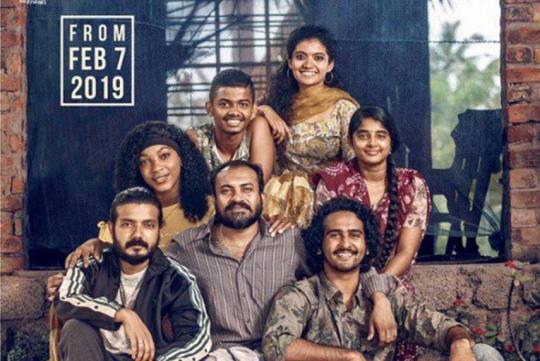
An effectual portrayal of the simplicity of life in a small village, Kumbalangi Nights follows four brothers and the progression of their relationship with one another as they discover love, life, and happiness. What makes this film different from others on this list is, that barring the end sequence, the film focuses mainly on basic conflicts. While the story progresses slowly, the film remains strong due to the character arcs, shaped by these little conflicts. Apart from the four brothers, there are many other characters, each of whom has his/her own story to tell. And the audience engagement with these characters who metaphorically represent different ways of life is what makes Kumbalangi Nights a beautifully crafted piece of art.
2. Jallikattu
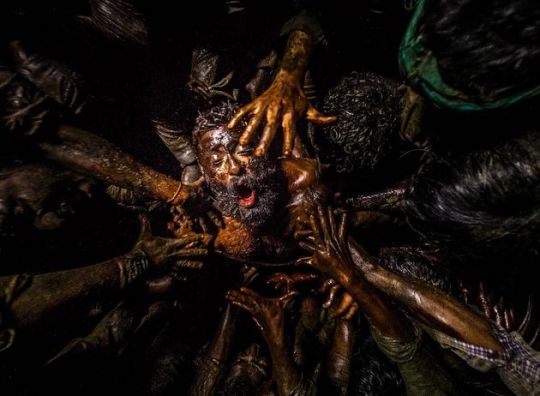
Society is a jungle and all humans are animals. As the men in this film, hunt a bull gone rogue in their village, their interpersonal conflicts turn into monstrous rivalry. In their desperation to capture it, these men have to become equals to the bull, which leads to them becoming as threatening to each other as the bull is to them. The search for the bull becomes a fight for survival. The distinguishing factors of this film are the production technicalities, which lead to a thunderous climax. There is the man-made, VFX controlled bull that needs to look realistic enough for the audience to truly imagine a bull in that scenario. And there is the suspenseful soundtrack, full of dramatic beats meant to imitate a tribal state. Jallikattu is an immensely fine-tuned, artistic venture that serves as a metaphor for the crumbling society.
3. Helen

Malayalam films are known for taking the simplest of ideas and adapting them into engaging, human stories. Helen is one such film. It’s the story of a young woman and her relationships with those around her that come to fore one ill-fated evening when she is trapped in a cooler room. It begins as a slice-of-life drama and slowly transitions into a survival drama. This film thrives on its thrilling, edge-of-the-seat writing. Each second of the narrative is vital. The suspense is built not on her survival, but instead on how she uses her intelligence to keep herself safe, for longer than a human ideally should have lived in such an environment. Without many dialogues, she manages to convey so much through her facial expressions and her actions when she is trapped. Helen is a marvelous entertainer that manages to keep the audience hooked till the very end.
4. Virus
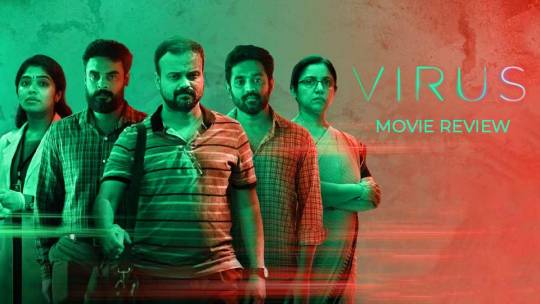
In 2018, Kerala suffered a Nipah outbreak, claiming many lives. But due to the efficiency of the government officials working alongside doctors, it was contained before it caused too much damage. Virus brings this real story to the forefront. The film doesn’t engage in much cinematic liberty, barring the dramatization of human nature, which is necessary in order for the audience to empathize with the pains of the characters. Otherwise, most of the facts and characters are synonymous with the real life incident. The enormous star cast including names such as Parvathy, Tovino Thomas, Asif Ali, Sreenath Basi, Rima Kallingal, Madonna Sebastian, Soubin Shahir, and many, many more talented actors, prove that amount of screen presence doesn’t always amount to well-rounded characters. Because of the overflow of characters, most characters are limited to only a few scenes. Yet, each character is so well-written, that the audience instantly connects with them. Virus is not only a succinct thriller, but also an emotional journey.
5. Uyare

Out of the many amazing Malayalam films released in 2019, Uyare is the most dramatic. Yet, its dramatic nature doesn’t negatively impact the film’s nature. Malayalam films are traditionally known to be simplistic, realistic portrayals of life as it is. In this respect, Uyare is no different. But it manages to create a separate base of its own by using conventional, heightened drama. This film, which tells the story of a young woman aiming to fulfill her dream of flying after surviving an acid attack, is a heart-wrenching tale. The topic is such, that a simplistic outlook wouldn’t do justice to the emotions felt by the characters, which is why certain scenes require extreme acting. And this emotional roundabout is the strongest element of this unique drama.
22 notes
·
View notes
Text
Top 5 Tamil Films of 2019
January 6, 2019
by Inakshi Chandra-Mohanty
1. Super Deluxe

The finest Tamil film of this year is one that can be defined as pure craziness. Super Deluxe is a three hour long lecture on the meaning of life, blurring lines between good and evil, that viewed in a socio-political context can be both motivating and dangerous. In a classic case of hyperlink cinema, the film is set across two days with four stories, interlinked with one another by one factor: coincidence. As the film goes on, going back and forth between the stories, events slowly begin to spiral out of control, building tension and leading to a fruitful climax. In all aspects, including writing, cinematography, editing, acting, direction, the film achieves perfection. Director Thiagarajan Kumararaja is heavily inspired by films as is seen through his references to films ranging from Disco Dancer to Kill Bill to Star Wars, making Super Deluxe a treat for film aficionados.
Read my full review here.
2. Peranbu

Peranbu is not just a film, it’s a piece of exquisite art. Every frame is designed as a painting. A visually captivating, emotionally exhilarating film, Peranbu is the story of a man, Amudhavan as he attempts to understand his handicapped daughter’s struggles, while raising her in a society unwilling to accept her. Through its many stages, the film explores life in connection to nature. The progressions range from the most beautiful to the most ruthless. But Amudhavan never loses hope. At its core, the film is a human story. It’s a character study into this man’s emotional evolution as he raises the daughter he has never known. The emotions are explored beautifully through well-written characters, motivating visuals, and a hopeful soundtrack. With each detail fine-tuned to perfection, this film is a masterpiece.
3. KD (Karuppudurai)

It is rare for an Indian film to be devoid of any romantic conflicts, focusing on an unconventional relationship between two unique characters, a young boy without a family, and an elderly man with a family that does not care for him. The film thrives on the warm relationship between these two as Kutty explores life and KD rediscovers it. It’s a journey with no destination. KD and Kutty forge an instant connection with the audience. The film remains entertaining throughout due to the comical situations and memorable dramatic moments between the two of them. Their cute banter and the genuine familial bonding they share make the film a heartwarming experience.
4. Asuran
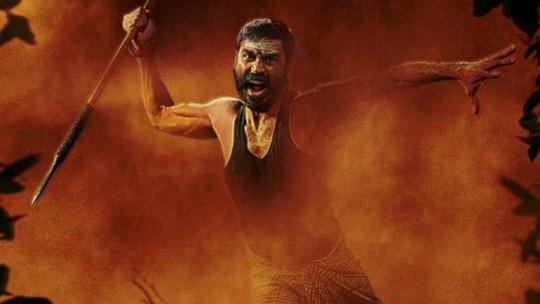
Caste is an important issue commonly explored in South Indian films. Asuran takes this simple topic and adds a new dimension to it. The film dives into the dark side of human nature and exposes the reality of the caste system deeply entrenched in Indian society. Asuran is the story of a farmer from a lower caste, whose demon-like instincts are triggered at various points throughout his life as he strives to protect his family. It’s about a conflict within as he attempts to maintain his ideal of non-violence, after witnessing the negative repercussions of violence, but is pushed further and further into this torturous game in which the powerful are always rewarded and the poor, punished. The film’s strength lies in the storytelling techniques the director uses to establish the characters and reveal past events. There is a build up as the audience gets accustomed to Sivagaami’s elder self, and a payoff as the younger self is revealed. Asuran is not only socially relevant, it is also brilliant cinema.
5. To Let
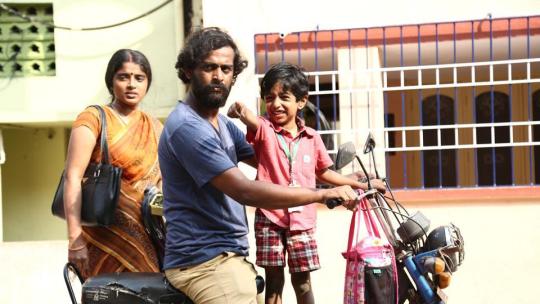
Securing a home for yourself and your family in larger cities such as Chennai, Mumbai, etc. is a difficult task. It is made even more complicated by the awkward demands of house owners that specifically target people of certain professions, religions, and castes, denying them access to affordable housing. To Let is a film, submerged in reality, that tells the story of a family that faces similar extenuating circumstances as they search for a home after being told to vacate by their landlady. The film is situated as a slow burn, using unusual takes, minimal music, and subtle acting to develop the plot. It doesn’t tread on the conventional dramatic route of Indian films, instead being more influenced by Western ideals of realism. The characters are so well established within the first few minutes of the film, that despite the slow moving nature of the plot, the film remains engaging, as we are keen to know what happens next in the lives of the characters so deeply etched in our hearts. The film is warm yet brutal, soft yet serious. This combination of a variety of opposing tonalities is what makes this film a masterful take on an important issue.
25 notes
·
View notes
Text
Every Single Indian Film Released in 2019 That I Have Seen Ranked
Super Deluxe
Jersey
Peranbu
Gully Boy
Kumbalangi Nights
Jallikattu
Section 375
Agent Sai Srinivasa Athreya
Soni
KD
Helen
Asuran
Virus
To Let
Thadam
Uyare
Article 15
Uri
Mere Pyaare Prime Minister
Evaru
Mard Ko Dard Nahin Hota
Brochevarevarura
June
Ishq
Hamid
Bala
Kabir Singh
Photograph
Oh Baby
Majili
The Zoya Factor
Music Teacher
Ek Ladki Ko Dekha Toh Aisa Laga
War
Super 30
The Sky is Pink
Monster
Judgementall Hai Kya
Batla House
Notebook
De De Pyaar De
Aadai
Bigil
Gang Leader
Milan Talkies
Mission Mangal
Badla
Panipat
Manikarnika
Vellai Pookal
Manmadhudu 2
Viswasam
Chhichhore
100
Lucifer
Why Cheat India
Kalank
F2
Dear Comrade
Total Dhamaal
Luka Chhupi
Dream Girl
Drive
Bharat
RAW
Arjun Patiala
1 note
·
View note